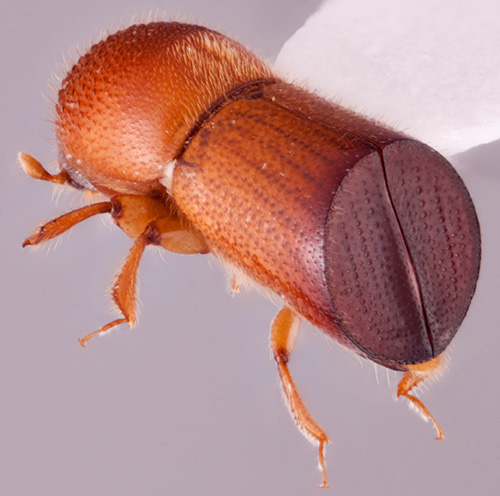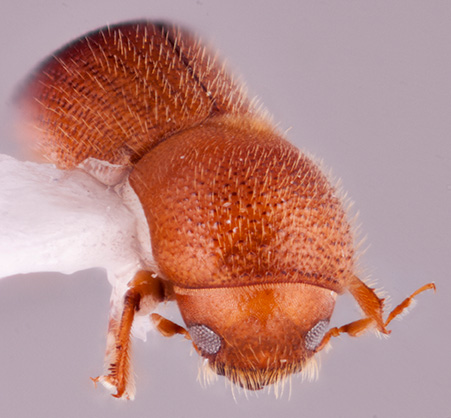Xylosandrus amputatus
|
Xylosandrus amputatus lateral; R.K. Osborn |
|
Xylosandrus amputatus dorsal; R.K. Osborn |
|
Xylosandrus amputatus declivity; R.K. Osborn |
|
Xylosandrus amputatus frontal; R.K. Osborn |
Taxonomic history
Xyleborus amputatus Blandford, 1894c: 575.
Amasa amputatus [sic!] (Blandford): Wood and Bright, 1992: 682.
Xylosandrus amputatus (Blandford): Dole and Cognato, 2010: 473.
Synonyms
Xyleborus melli Schedl, 1938: 463. Beaver, 2010: 55.
Diagnosis
2.8 mm long (mean = 2.8 mm; n = 5); 2.15−2.33 times as long as wide. This species can be distinguished by its moderate size; upper part of eye smaller than lower part; elytralelytral:
'pertaining to the elytra
discdisc:
the flat central upper surface of any body part (e.g. pronotum and elytra)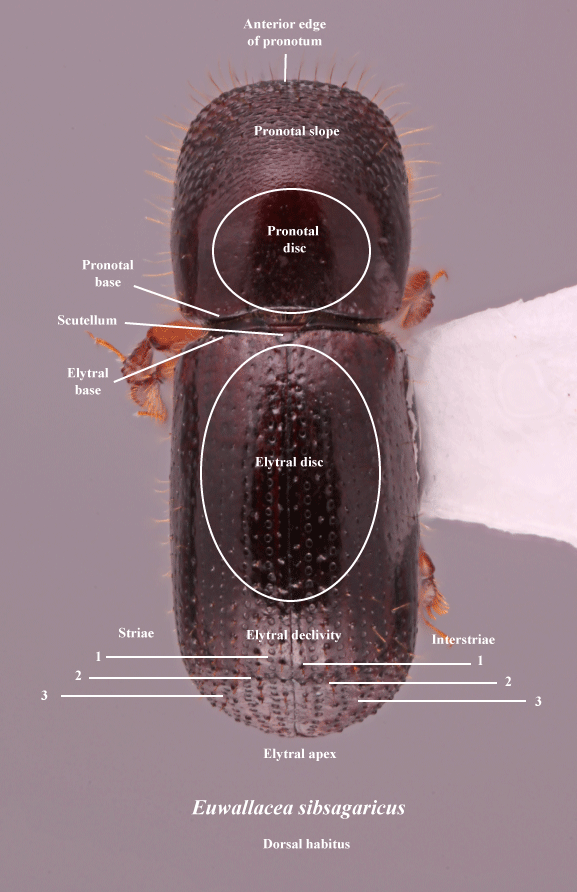 weakly ascending apically, longer than declivitydeclivity:
weakly ascending apically, longer than declivitydeclivity:
downward slope of either the pronotum or elytra
 ; declivitaldeclivital:
; declivitaldeclivital:
pertaining to the elytral declivity
face steep, abruptly separated from discdisc:
the flat central upper surface of any body part (e.g. pronotum and elytra) ; elytraelytron:
; elytraelytron:
'
the two sclerotized forewings of beetles that protect and cover the flight wings
appearing truncatetruncate:
appearing cut off or suddenly shortened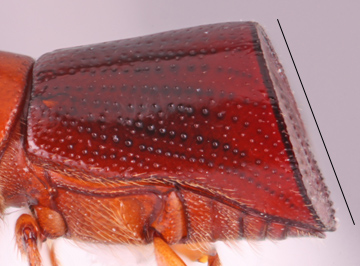 ; posterolateralposterolateral:
; posterolateralposterolateral:
'relating to end of the side part/portion
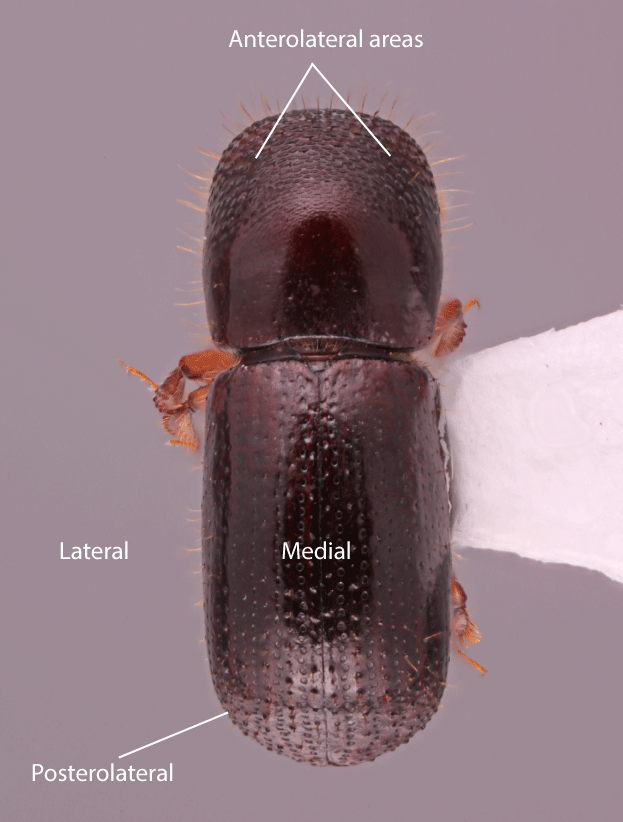 margins of elytraelytron:
margins of elytraelytron:
'
the two sclerotized forewings of beetles that protect and cover the flight wings
carinate to suture forming a circumdeclivital ringcircumdeclivital ring:
a costa that completely encircles the elytral declivity
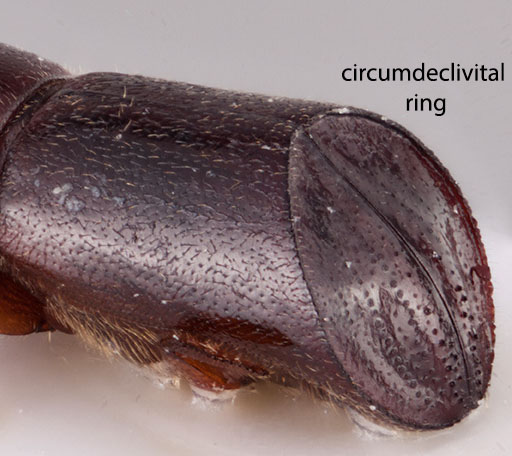 ; declivitaldeclivital:
; declivitaldeclivital:
pertaining to the elytral declivity
face flat, coarsely shagreenedshagreened:
covered with a closely-set roughness, like shark skin'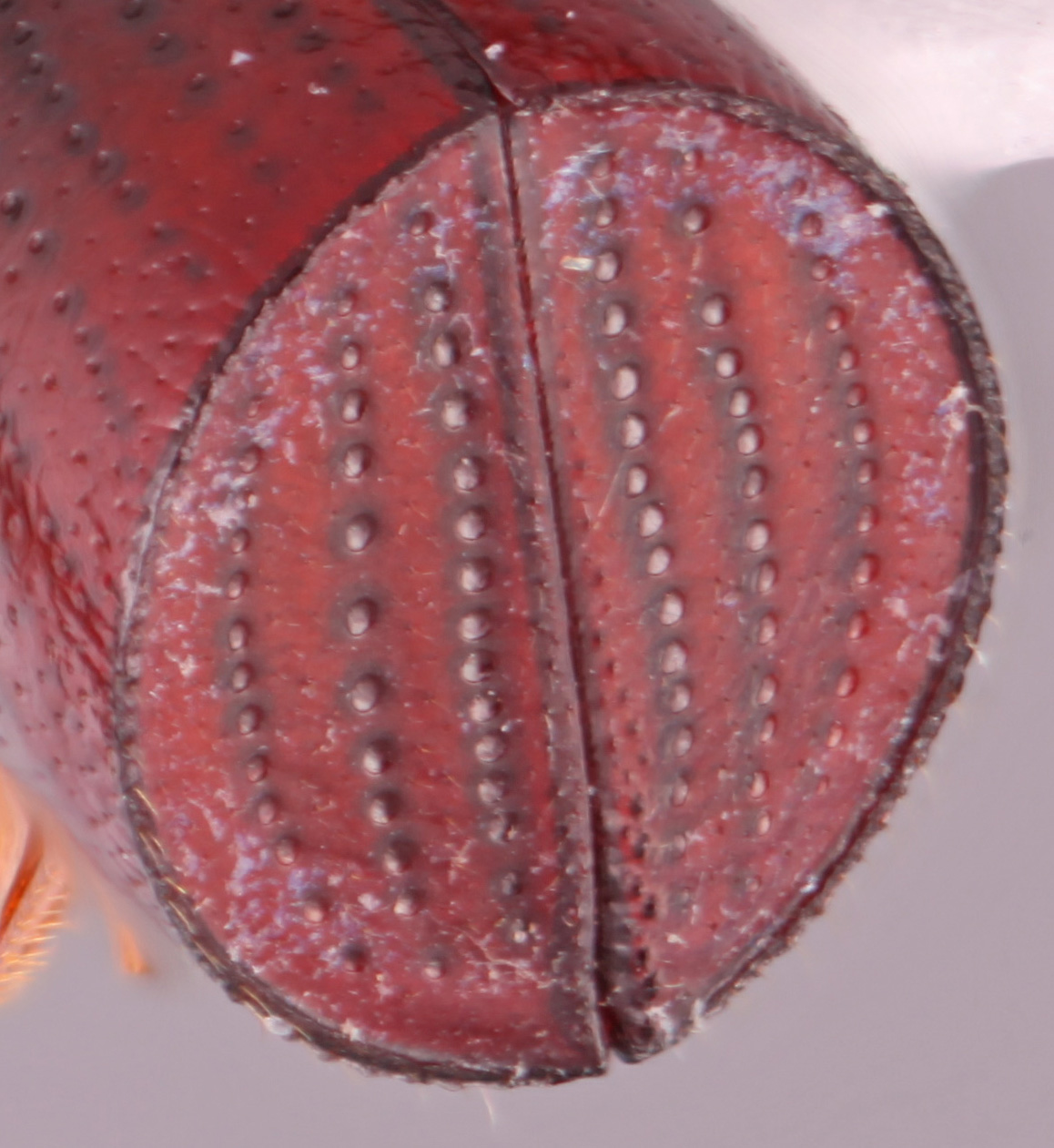 , dull; declivitydeclivity:
, dull; declivitydeclivity:
downward slope of either the pronotum or elytra
 with four punctatepunctate:
with four punctatepunctate:
'set with fine impressed points, appearing as pin pricks
 , glabrousglabrous:
, glabrousglabrous:
'smooth, devoid of vestiture
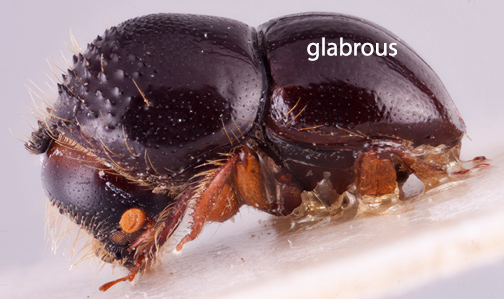 , straight striaestria:
, straight striaestria:
punctures in rows, which may or may not be impressed to make grooves visible; strial punctures large; interstriaeinterstria:
visible; strial punctures large; interstriaeinterstria:
'longitudinal spaces along the elytra between the striae, which is not as<br />
impressed and bear smaller punctures.
 glabrousglabrous:
glabrousglabrous:
'smooth, devoid of vestiture
 , punctatepunctate:
, punctatepunctate:
'set with fine impressed points, appearing as pin pricks
 ; posterolateralposterolateral:
; posterolateralposterolateral:
'relating to end of the side part/portion
 margin smooth, not granulategranulate:
margin smooth, not granulategranulate:
'pertaining to a coarse, grainy surface texture'
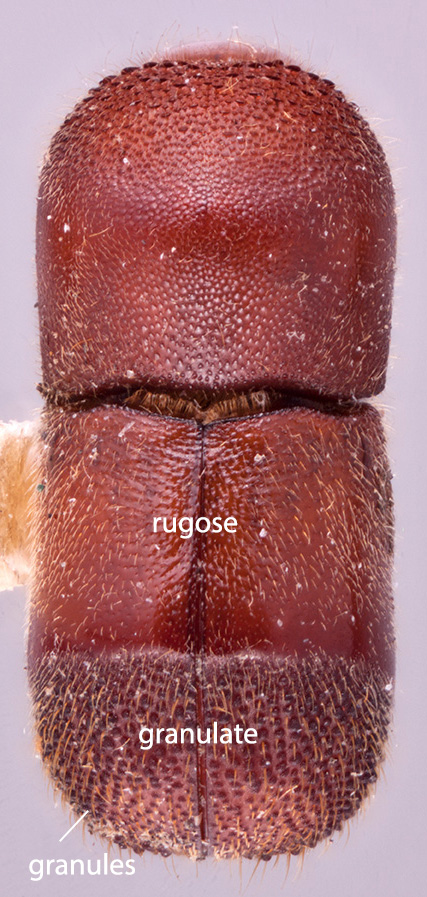 ; pronotumpronotum:
; pronotumpronotum:
'the dorsal surface of the thorax
as long as wide, from dorsaldorsal:
'of or relating to the upper surface; opposite of ventral
 view rounded (type 1) and laterallateral:
view rounded (type 1) and laterallateral:
'pertaining to the side
 view basic (type 0), summitsummit:
view basic (type 0), summitsummit:
highest point, used for pronotum and elytra, denotes the peak between pronotal frontal slope and disc, and between elytral disc and declivity at midpoint, basalbase:
at midpoint, basalbase:
point or edge closest to the body; opposite of apex half shiningshining:
half shiningshining:
appearing glossy or bright in luster; referring to a surface that is polished and reflects light well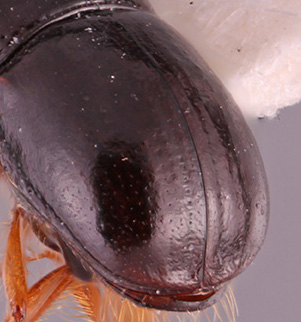 , densely punctatepunctate:
, densely punctatepunctate:
'set with fine impressed points, appearing as pin pricks
 ; and broad, dense mycangial tuftmycangial tuft:
; and broad, dense mycangial tuftmycangial tuft:
'tuft of setae that denotes the mycangia exterior opening
 on the pronotalpronotal:
on the pronotalpronotal:
'pertaining to the pronotum
basebase:
point or edge closest to the body; opposite of apex .
.
May be confused with
Amasa spp., Xylosandrus bellinsulanus, X. mancus, and X. trunculus
Distribution
Cambodia, China (Fujian, Guangdong, Hunan, Shanghai, Sichuan), Japan, South Korea, Taiwan, Vietnam; imported and established in USA (Cognato et al. 2011Cognato et al. 2011:
Cognato AI, Olson RO, Rabaglia RJ. 2011. An Asian ambrosia beetle, Xylosandrus amputatus (Blandford) (Curculionidae: Scolytinae: Xyleborini), discovered in Florida, U.S.A. The Coleopterists Bulletin 65: 43-45. https://doi.org/10.1649/0010-065X-65.1.43, Gomez et al. 2018aGomez et al. 2018a:
Gomez DF, Rabaglia RJ, Fairbanks KEO, Hulcr J. 2018a. North American Xyleborini north of Mexico: a review and key to genera and species (Coleoptera, Curculionidae, Scolytinae). ZooKeys 768: 19-68. https://doi.org/10.3897/zookeys.768.24697)
Host plants
recorded from Acer (Aceraceae), Cinnamomum, Machilus (Lauraceae), Pelargonium (Geraniaceae), and Ziziphus (Rhamnaceae) (Dole and Cognato 2010Dole and Cognato 2010:
Dole SA, Cognato AI, 2010. Revision of Xylosandrus Reitter (Curculionidae: Scolytinae). Proceedings of the California of Science 61: 451-545.)
DNA data
Sequences available for COI and CAD.



